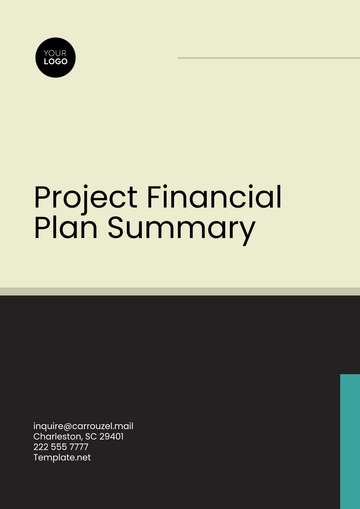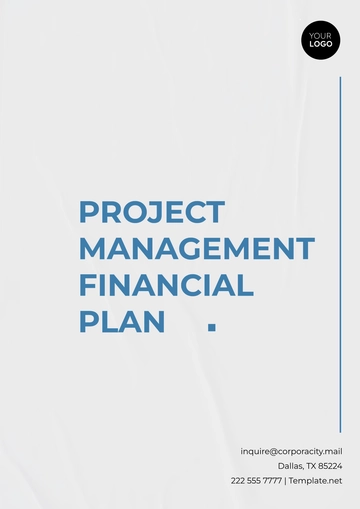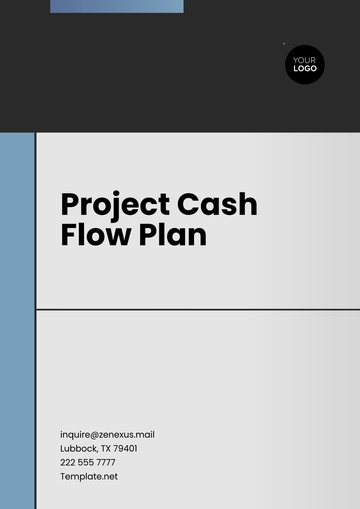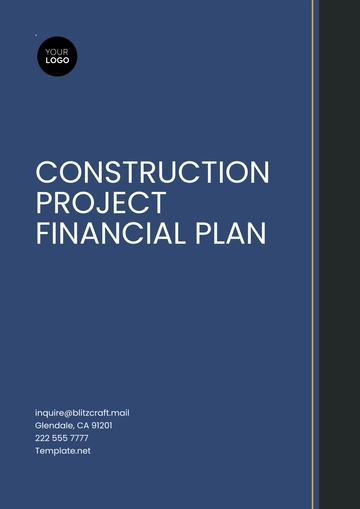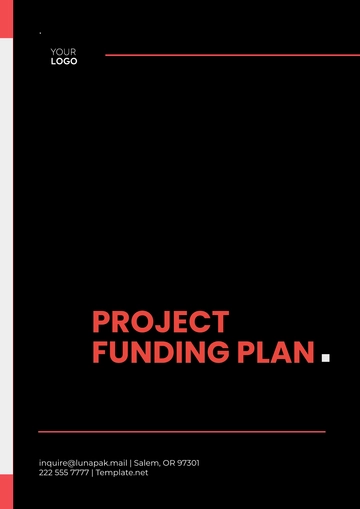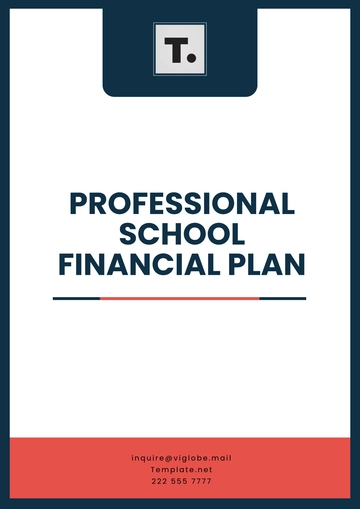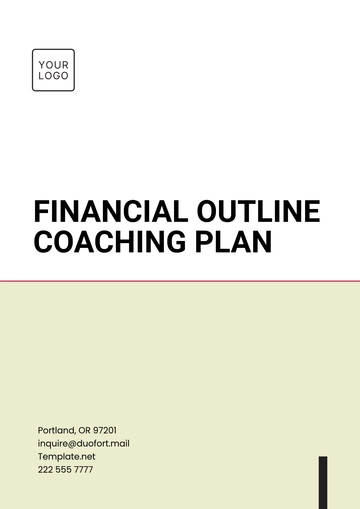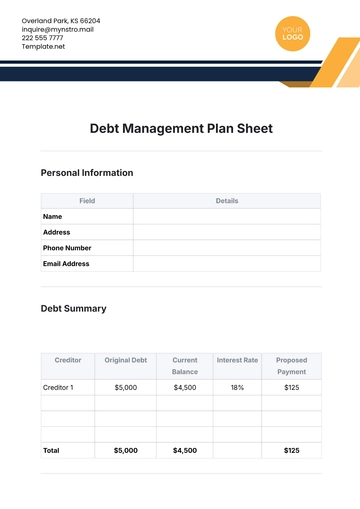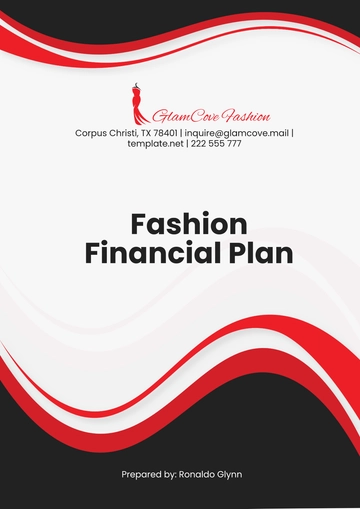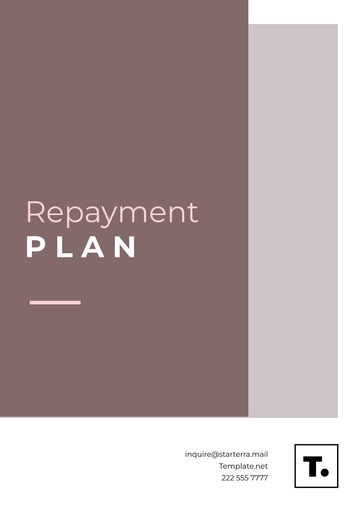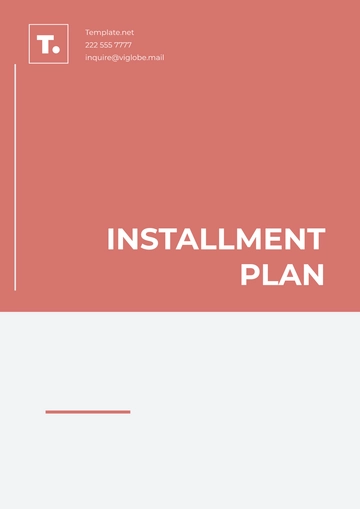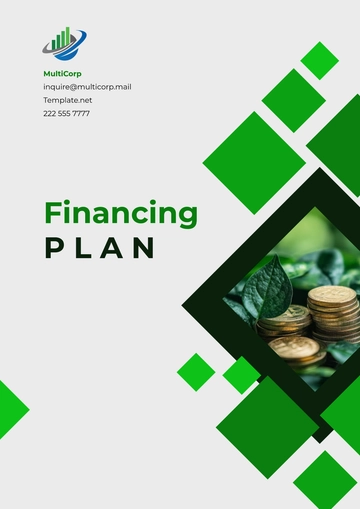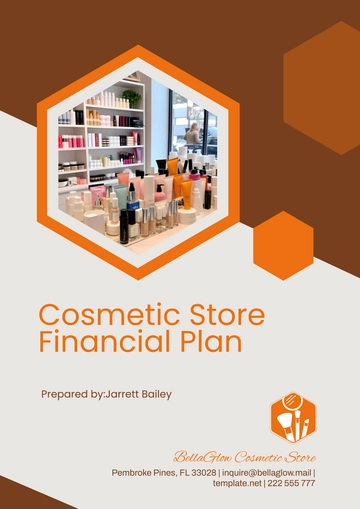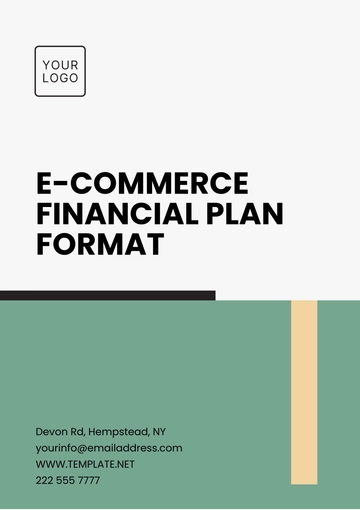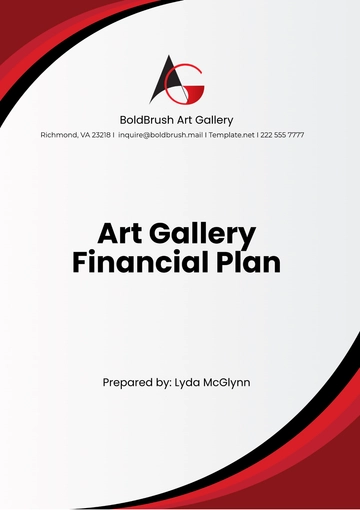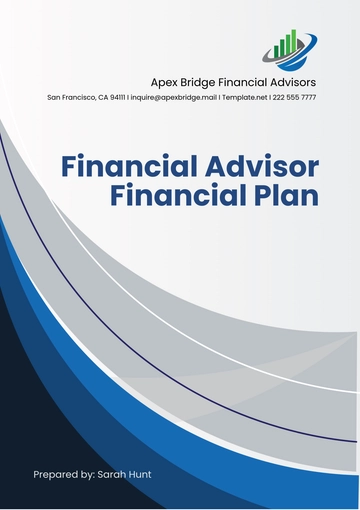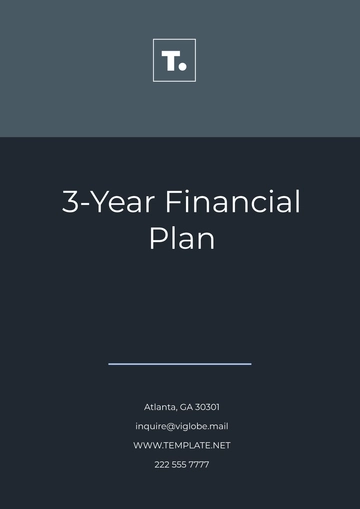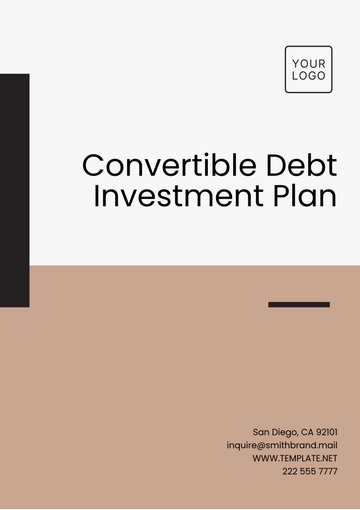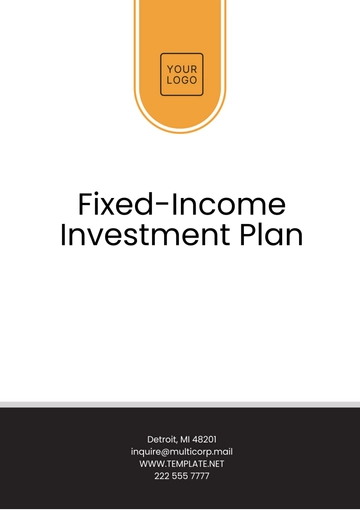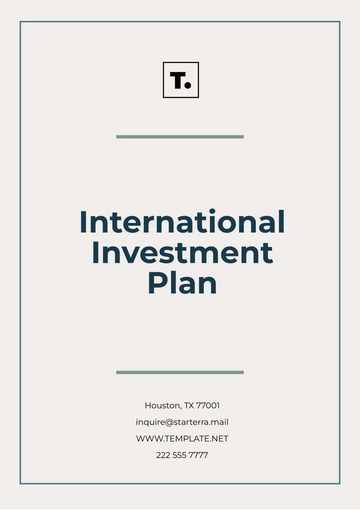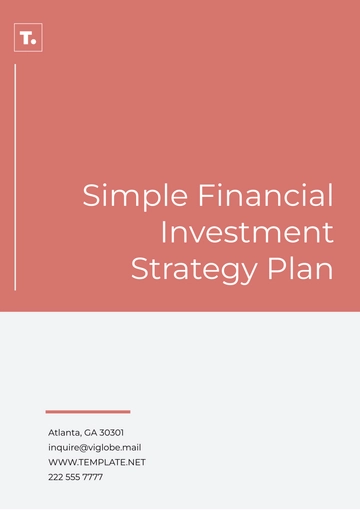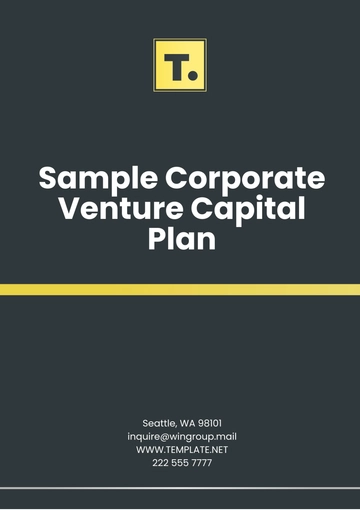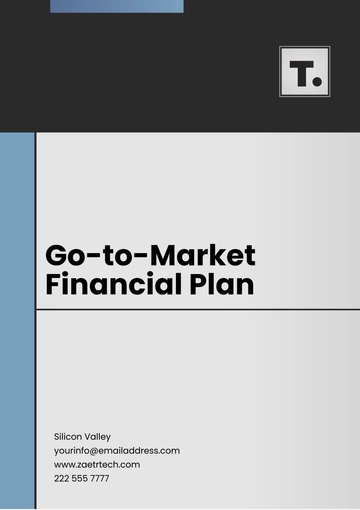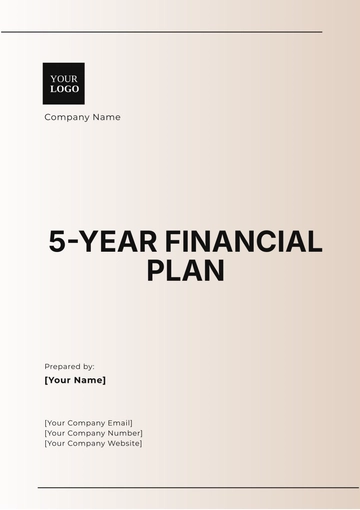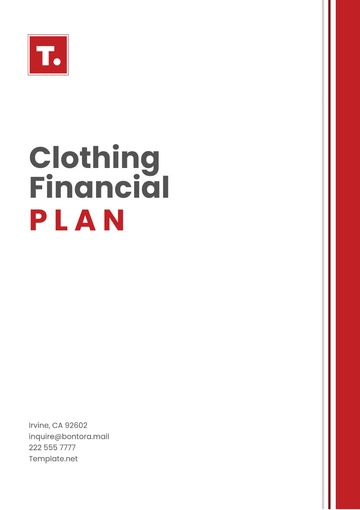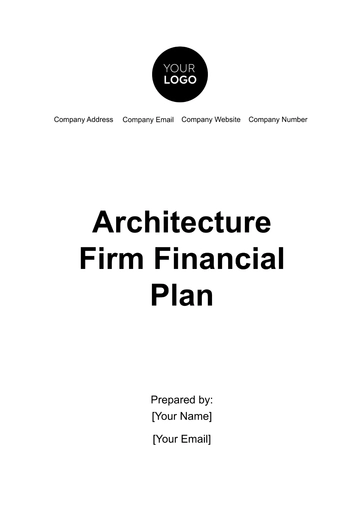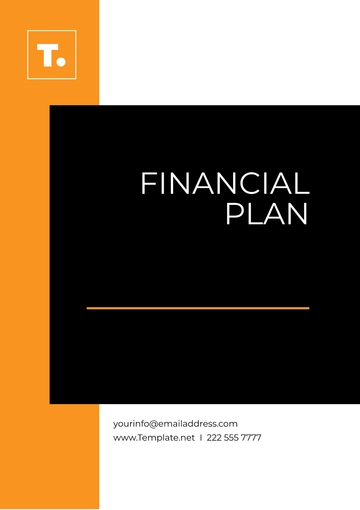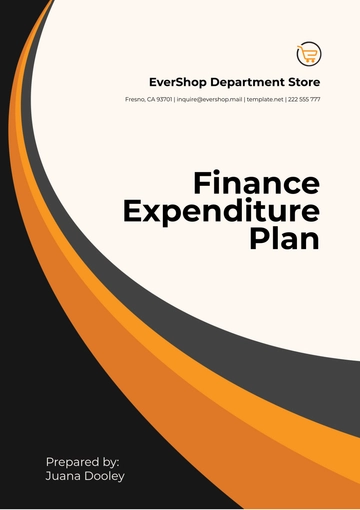Free Architecture Financial Plan
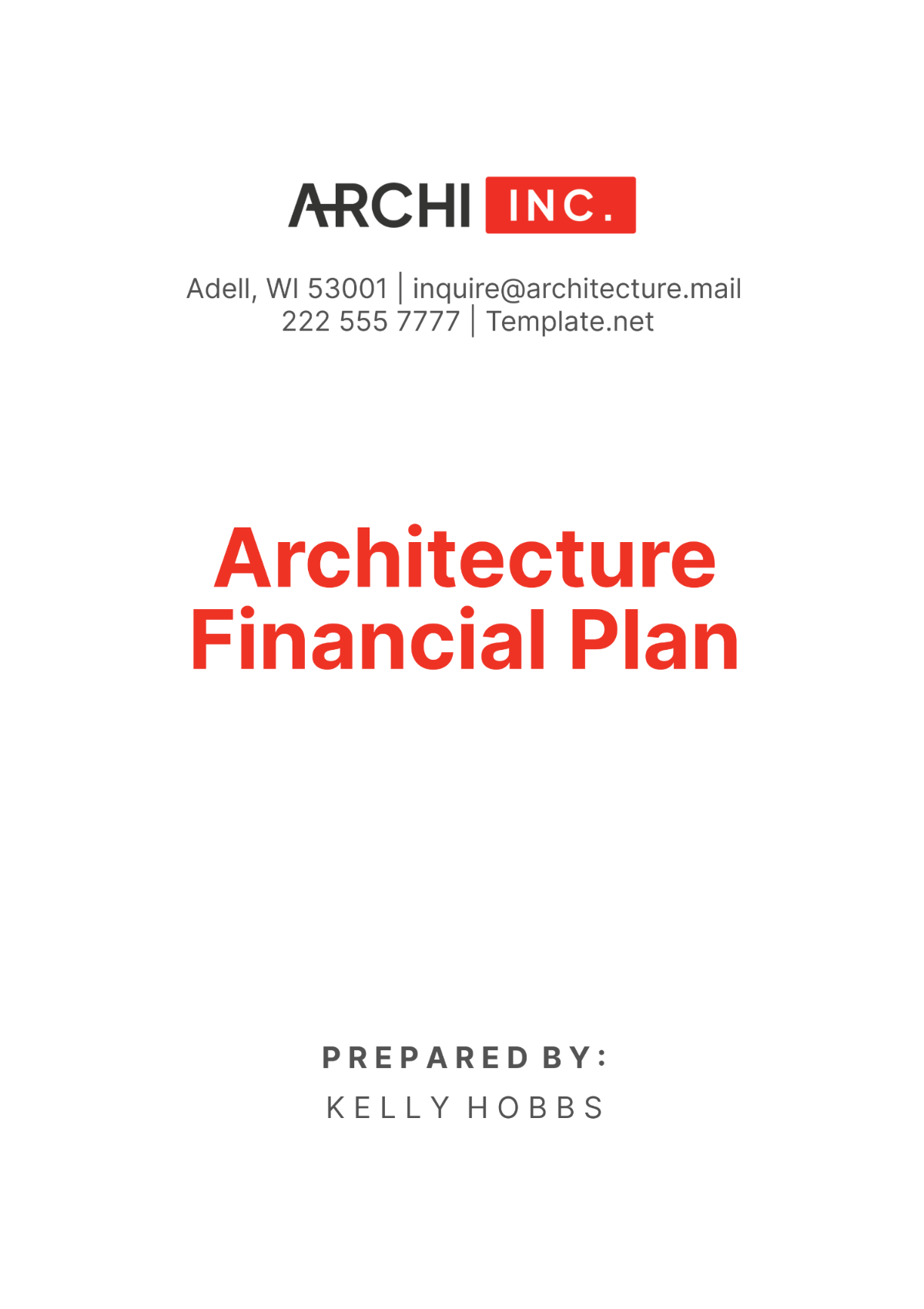
I. Executive Summary
This Architecture Financial Plan outlines our financial strategy for the upcoming project. The purpose of this plan is to ensure that all financial aspects of the project are thoroughly planned and monitored, allowing us to deliver high-quality architectural services while maintaining financial stability and profitability.
We are undertaking a comprehensive architectural project located at [Project Location]. The project involves detailed design and planning, obtaining necessary permits and approvals, managing construction activities, procuring materials and supplies, and coordinating labor.
Financial Goals
Maintain total project costs within the budget of $1,000,000.
Ensure timely payments to all contractors and suppliers.
Achieve a net profit margin of 15%.
Mitigate financial risks through effective cost control and monitoring.
II. Project Description
We will provide architectural services for the new commercial building project located at [Project Location]. The project scope includes schematic design, design development, construction documents, and construction administration. The timeline for the project is as follows:
Schematic Design: 30 days
Design Development: 60 days
Construction Documents: 90 days
Construction Administration: Throughout construction period, at 180 days
III. Budget Overview
The total estimated budget for the project is $1,000,000. Below is a table summarizing the major cost categories:
Cost Category | Estimated Cost ($) |
|---|---|
Design and Planning | 200,000 |
Permit and Approval | 50,000 |
Construction | 600,000 |
Materials and Supplies | 100,000 |
Labor | 50,000 |
Total | 1,000,000 |
A. Design and Planning Costs
The design and planning phase includes architectural fees, engineering fees, and consultant fees. Below is a detailed breakdown of these costs:
Design and Planning Costs | Estimated Cost ($) |
|---|---|
Architectural Fees | 100,000 |
Engineering Fees | 70,000 |
Consultant Fees | 30,000 |
Total | 200,000 |
The design and planning costs constitute 20% of the total project budget. Architectural fees are the largest component, reflecting the comprehensive design services provided. Engineering and consultant fees are also significant, ensuring that the project meets all technical and regulatory requirements.
B. Permit and Approval Fees
The permit and approval phase involves obtaining the necessary permits and approvals for the project. Below is a detailed breakdown of these costs:
Permit and Approval Fees | Estimated Cost ($) |
|---|---|
Building Permits | 25,000 |
Environmental Approvals | 15,000 |
Zoning Fees | 10,000 |
Total | 50,000 |
Permit and approval fees represent 5% of the total budget. These fees are essential for ensuring that the project complies with local regulations and environmental standards. Building permits are the largest expense in this category.
C. Construction Costs
The construction phase includes site preparation, foundation and structural work, electrical and plumbing, and interior and exterior finishes. Below is a detailed breakdown of these costs:
Construction Costs | Estimated Cost ($) |
|---|---|
Site Preparation | 50,000 |
Foundation and Structural | 200,000 |
Electrical and Plumbing | 150,000 |
Interior Finishes | 100,000 |
Exterior Finishes | 100,000 |
Total | 600,000 |
Construction costs account for 60% of the total project budget. Foundation and structural work are the most significant expenses, followed by electrical and plumbing. Interior and exterior finishes are also substantial, contributing to the overall aesthetic and functionality of the building.
D. Materials and Supplies
This category includes the procurement of necessary materials and supplies for the construction phase. Below is a detailed breakdown of these costs:
Materials and Supplies | Estimated Cost ($) |
|---|---|
Concrete and Steel | 40,000 |
Electrical Supplies | 20,000 |
Plumbing Supplies | 20,000 |
Interior Finishes | 10,000 |
Exterior Finishes | 10,000 |
Total | 100,000 |
Materials and supplies constitute 10% of the total budget. Concrete and steel are the largest expenses, reflecting the fundamental materials required for construction. Electrical and plumbing supplies are also significant, ensuring that the building meets all functional requirements.
E. Labor Costs
The labor costs include wages, salaries, and subcontractor fees. Below is a detailed breakdown of these costs:
Labor Costs | Estimated Cost ($) |
|---|---|
Wages and Salaries | 30,000 |
Subcontractor Fees | 20,000 |
Total | 50,000 |
Labor costs represent 5% of the total budget. Wages and salaries are the largest component, reflecting the skilled labor required for the project. Subcontractor fees are also significant, covering specialized services needed during construction.
IV. Funding Sources
The funding for this project will come from a combination of client contributions, loans, grants, and partner investments. Below is a breakdown of the funding sources and their respective percentages:
Funding Source | Percentage (%) |
|---|---|
Client Contributions | 50% |
Loans and Financing | 25% |
Grants and Subsidies | 15% |
Partner Investments | 10% |
Total | 100% |
Client contributions make up the largest portion of the funding at 50%, ensuring a significant initial investment in the project. Loans and financing provide an additional 25%, while grants and subsidies add 15% to support specific aspects of the project. Partner investments contribute the remaining 10%, reflecting a diversified funding strategy.
V. Cash Flow Analysis
The cash flow analysis ensures that the project maintains a positive cash flow throughout its duration. Below is a table with monthly cash flow projections:
Month | Inflows ($) | Outflows ($) | Net Cash Flow ($) |
|---|---|---|---|
1 | 100,000 | 50,000 | 50,000 |
2 | 100,000 | 100,000 | 0 |
3 | 150,000 | 150,000 | 0 |
4 | 200,000 | 200,000 | 0 |
5 | 150,000 | 150,000 | 0 |
6 | 100,000 | 100,000 | 0 |
7 | 100,000 | 100,000 | 0 |
8 | 100,000 | 100,000 | 0 |
9 | 100,000 | 100,000 | 0 |
10 | 100,000 | 100,000 | 0 |
11 | 100,000 | 50,000 | 50,000 |
12 | 100,000 | 50,000 | 50,000 |
Total | 1,400,000 | 1,300,000 | 100,000 |
The project is expected to break even by the end of the 12th month, with a net positive cash flow of $100,000. This analysis indicates that the project will maintain financial stability throughout its duration, ensuring that inflows are sufficient to cover outflows.
VI. Risk Management
Effective risk management is crucial to ensure the project's success. Below is a table identifying potential risks, their likelihood, and impact:
Risk | Likelihood | Impact |
|---|---|---|
Cost Overruns | Medium | High |
Delays in Approvals | High | Medium |
Material Shortages | Low | High |
Labor Disputes | Medium | Medium |
Funding Shortfalls | Low | High |
To address these risks, we have implemented several mitigation strategies. Cost overruns are managed through a detailed budget and regular monitoring. Delays in approvals are mitigated by proactive engagement with regulatory bodies. Material shortages are addressed by securing multiple suppliers. Labor disputes are managed through clear contracts and regular communication with workers. Funding shortfalls are mitigated by maintaining good relationships with financial institutions and having contingency funds in place.
VII. Financial Controls and Monitoring
To ensure financial discipline, we will implement the following measures:
Regular budget reviews and adjustments
Monthly financial reporting to stakeholders
Strict approval process for expenditures
Continuous monitoring of cash flow
Implementation of cost-saving measures
Use of accounting software for real-time financial tracking
VIII. Profit and Loss Forecast
The following table presents the profit and loss forecast for the next three years:
Year | Revenue ($) | Expenses ($) | Net Profit ($) |
|---|---|---|---|
1 | 1,200,000 | 1,000,000 | 200,000 |
2 | 1,300,000 | 1,100,000 | 200,000 |
3 | 1,400,000 | 1,200,000 | 200,000 |
Total | 3,900,000 | 3,300,000 | 600,000 |
Over the next three years, we project steady revenue growth with consistent net profits of $200,000 annually. This forecast indicates a strong financial position and the potential for sustainable growth.
IX. Call to Action
We invite all stakeholders to review this financial plan thoroughly and provide feedback. Your support and active participation are crucial for the successful execution of this project. Together, we can achieve our financial goals and deliver a successful architectural project.
- 100% Customizable, free editor
- Access 1 Million+ Templates, photo’s & graphics
- Download or share as a template
- Click and replace photos, graphics, text, backgrounds
- Resize, crop, AI write & more
- Access advanced editor
Create a comprehensive and customizable financial plan with this editable Architecture Financial Plan Template. Editable in our AI Editor tool, it helps you outline budgets, funding sources, and financial strategies with ease. Perfect for architects aiming to maintain financial control and transparency throughout the project lifecycle.
You may also like
- Finance Plan
- Construction Plan
- Sales Plan
- Development Plan
- Career Plan
- Budget Plan
- HR Plan
- Education Plan
- Transition Plan
- Work Plan
- Training Plan
- Communication Plan
- Operation Plan
- Health And Safety Plan
- Strategy Plan
- Professional Development Plan
- Advertising Plan
- Risk Management Plan
- Restaurant Plan
- School Plan
- Nursing Home Patient Care Plan
- Nursing Care Plan
- Plan Event
- Startup Plan
- Social Media Plan
- Staffing Plan
- Annual Plan
- Content Plan
- Payment Plan
- Implementation Plan
- Hotel Plan
- Workout Plan
- Accounting Plan
- Campaign Plan
- Essay Plan
- 30 60 90 Day Plan
- Research Plan
- Recruitment Plan
- 90 Day Plan
- Quarterly Plan
- Emergency Plan
- 5 Year Plan
- Gym Plan
- Personal Plan
- IT and Software Plan
- Treatment Plan
- Real Estate Plan
- Law Firm Plan
- Healthcare Plan
- Improvement Plan
- Media Plan
- 5 Year Business Plan
- Learning Plan
- Marketing Campaign Plan
- Travel Agency Plan
- Cleaning Services Plan
- Interior Design Plan
- Performance Plan
- PR Plan
- Birth Plan
- Life Plan
- SEO Plan
- Disaster Recovery Plan
- Continuity Plan
- Launch Plan
- Legal Plan
- Behavior Plan
- Performance Improvement Plan
- Salon Plan
- Security Plan
- Security Management Plan
- Employee Development Plan
- Quality Plan
- Service Improvement Plan
- Growth Plan
- Incident Response Plan
- Basketball Plan
- Emergency Action Plan
- Product Launch Plan
- Spa Plan
- Employee Training Plan
- Data Analysis Plan
- Employee Action Plan
- Territory Plan
- Audit Plan
- Classroom Plan
- Activity Plan
- Parenting Plan
- Care Plan
- Project Execution Plan
- Exercise Plan
- Internship Plan
- Software Development Plan
- Continuous Improvement Plan
- Leave Plan
- 90 Day Sales Plan
- Advertising Agency Plan
- Employee Transition Plan
- Smart Action Plan
- Workplace Safety Plan
- Behavior Change Plan
- Contingency Plan
- Continuity of Operations Plan
- Health Plan
- Quality Control Plan
- Self Plan
- Sports Development Plan
- Change Management Plan
- Ecommerce Plan
- Personal Financial Plan
- Process Improvement Plan
- 30-60-90 Day Sales Plan
- Crisis Management Plan
- Engagement Plan
- Execution Plan
- Pandemic Plan
- Quality Assurance Plan
- Service Continuity Plan
- Agile Project Plan
- Fundraising Plan
- Job Transition Plan
- Asset Maintenance Plan
- Maintenance Plan
- Software Test Plan
- Staff Training and Development Plan
- 3 Year Plan
- Brand Activation Plan
- Release Plan
- Resource Plan
- Risk Mitigation Plan
- Teacher Plan
- 30 60 90 Day Plan for New Manager
- Food Safety Plan
- Food Truck Plan
- Hiring Plan
- Quality Management Plan
- Wellness Plan
- Behavior Intervention Plan
- Bonus Plan
- Investment Plan
- Maternity Leave Plan
- Pandemic Response Plan
- Succession Planning
- Coaching Plan
- Configuration Management Plan
- Remote Work Plan
- Self Care Plan
- Teaching Plan
- 100-Day Plan
- HACCP Plan
- Student Plan
- Sustainability Plan
- 30 60 90 Day Plan for Interview
- Access Plan
- Site Specific Safety Plan

